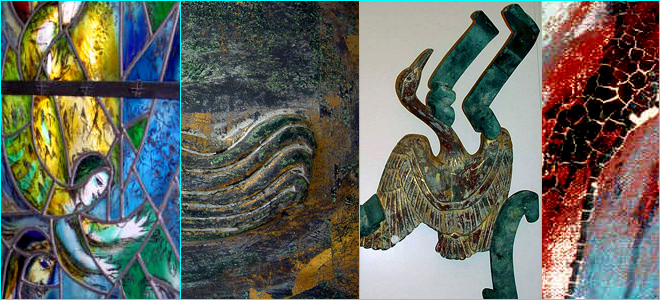| |
 |
|
|
| |
|
|
|
The Project
The objective of Maecenas World Patrimony Foundation is the conservation of art and historic objects from the collections of the United Nations' offices and its agencies.
By its nature, the United Nations cannot raise funds for purposes beyond its statutory objectives. The United Nations has in fact no budget for the conservation of this part of its cultural heritage.
The Henrik Sørenson wall-painting was offered by the Norwegian Government to the United Nations in 1939.
The execution of the restoration was managed by
Fine Arts Conservation Inc. , New York.
The Problems
Examination of the painting revealed that the overall surface was in good condition. However, there were sections with notable deterioration and, in particular, two areas were severely damaged.
The deterioration consisted of various degrees of flaking and paint loss. The areas primarily affected were those painted with blue pigment where this color was applied as a mixed-media of water-soluble and oil-based pigments.
|
| |
 |
| |
Changes in temperature and relative humidity within the room, most likely, caused the observed damages to the painting. When these parameters are not controlled within limits the expansion and contraction of the canvas remains an on going process that results in paint flaking.
There were also small pockets where the canvas was detached from the wall. These detachments could have resulted either from deterioration of the adhesive that was used to attach the canvas to the wall, or from insufficient amount of adhesive applied in the first place, or from dampness of the wall.
|
| |
 |
Damaged Areas
- Upper sections: Left and right sides adjacent to the top of the central pyramid
- Central sections: Left and right sides of the standing male figure located at the center, bottom section of the painting
- Lower section: Various regions within a three-foot border extending from the bottom edge (this section was for many years behind the cabinets that were positioned in front of the painting)
|
| |
The Restoration
Taking into consideration the location of the painting and continuous fluctuations in relative humidity, a mixture of bees/microcrystalline wax was used to lay down the flakes and consolidate the paint.
To accomplish the consolidation process the wax was first applied to small squares of glassine paper and then transferred to the damaged area with a tacking-iron. The excess wax was mechanically reduced using a scalpel, then absorbed onto cotton fabric using heat, and finally removed with solvents. The losses were filled with gesso that was textured to match the adjoining regions. Inpainting of the losses was completed using Maimeri restoration colors.
A final coat of matte/gloss varnish was applied where necessary to bring the saturation of the color in keeping with the specific surfaces.
|
| |
| |
|
|
|
|
© 2005 Maecenas World patrimony Foundation Website by rolandspek@yahoo.com
|
| |
